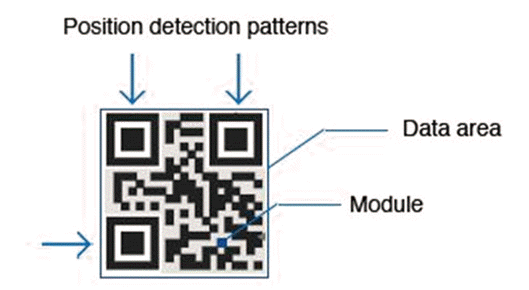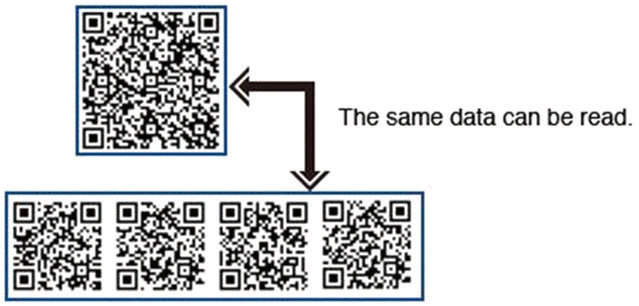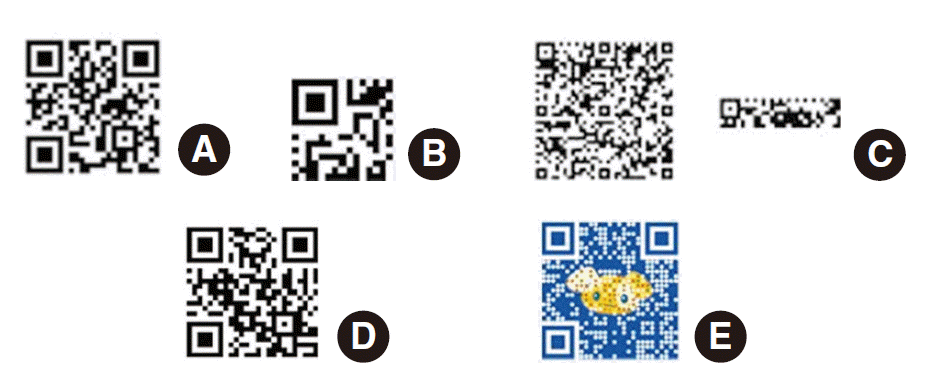An introduction to using QR codes in scholarly journals
Article information
Abstract
The Quick Response (QR) code was first developed in 1994 by Denso Wave Incorporated, Japan. From that point on, it came into general use as an identification mark for all kinds of commercial products, advertisements, and other public announcements. In scholarly journals, the QR code is used to provide immediate direction to the journal homepage or specific content such as figures or videos. To produce a QR code and print it in the print version or upload to the web is very simple. Using a QR code producing program, an editor can add simple information to a website. After that, a QR code is produced. A QR code is very stable, such that it can be used for a long time without loss of quality. Producing and adding QR codes to a journal costs nothing; therefore, to increase the visibility of their journals, it is time for editors to add QR codes to their journals.
Introduction
This paper aims to provide an overview on Quick Response (QR) codes and the practice of reading and generating QR codes. Much of this material can be found in greater detail at QR Code.com (http://www.qrcode.com/en/), which is a website published by Denso Wave [1]. The essential content was extracted and rephrased for scholarly journal editors with permission from Denso Sales Korea.
What Is a QR Code?
QR codes were first created in 1994 by Denso Wave Incorporated, Japan. Denso Wave is the parent company of Toyota. QR codes were designed for car manufacturing plants to manage car part inventories.
A QR code is the abbreviation for quick response code, which is a machine-readable optical label with information on the associated item or product. In barcodes, information is coded in one direction or one dimension only. On the other hand, in a two-dimensional code, which the QR code is, information is coded in two directions: horizontally and vertically. It can be read easily and is capable of holding a great deal of information. Although Denso Wave could choose to retain the patent rights to the QR code, the company declared that it would not exercise them, with the aim that QR codes be used by as many people as possible. Thus QR codes can be used at no cost and without worrying about patent problems. They are becoming a public code used worldwide.
High Capacity Encoding of Data
Several QR code features are worth examining in more detail. The QR code’s most important characteristic is the encoding of enormous quantities of data. Conventional bar codes can store up to 20 digits. On the other hand, QR codes can provide up to a hundred times more information than bar codes. QR codes can manage all types of data, for example, letters, numbers, graphics, and audio or video files. One QR code can encode up to just over 7,000 characters. For example, Fig. 1 shows the capacity of a QR code that encodes 300 alphanumeric characters.
Small Printout Size
Since a QR code symbol is designed with a two-dimensional structure, it can encode 10 times more data than a barcode of same size. A micro QR code may be used for a smaller print size (Fig. 2).
Dirt- and Damage-resistant Durability
The QR code has the ability to perform error correction. Data in QR codes can be recovered even if parts of the symbol have been destroyed or damaged. Data restoration is dependent on the proportion of damage (Fig. 3).
Readable from Any Direction in 360 Degrees
A QR code is designed to be rapidly readable from any direction in 360 degrees. This is possible due to the position detection patterns at three corners of the symbol. These patterns make the QR code symbol quickly readable. This pattern is also designed to evade background interference (Fig. 4).
Structured Appending Feature
Another feature of the QR code is its structured appending feature. One QR code symbol can contain up to 16 separate smaller symbols, each of which contains different unique information. The advantage of this structure is that it can be printed in a smaller space. Conversely, multiple QR code symbols can be grouped in a single data symbol (Fig. 5).
Types of QR Codes
It is worth examining each type of QR code briefly. QR code model 1 is the original QR code, and it can store up to 1,167 numerals (Fig. 6A). Model 2 was created by improving model 1 so that the code can be read more smoothly, and it can store up to 7,089 numerals. An ordinary QR code usually refers to model 2. Next is the micro QR code (Fig. 6B). There is only one orientation detecting pattern for this code. The advantage of the micro QR code is that it can be printed in a smaller space than the earlier models. An iQR code can be constituted of either square modules or rectangular ones (Fig. 6C). It can be printed as a turned-over code, black-and-white inversion code, or dot pattern code. SQRC has a reading restriction function (Fig. 6D). It can be used to store private information or manage a company’s internal information. LogoQ can incorporate high-level design features such as illustrations, letters, and logos (Fig. 6E).
Examples of QR Codes in Marketing
Some QR codes have been designed creatively (Fig. 7). It is possible to have different shapes or styles as long as the square or rectangular modules are present. Recently, QR has become popular, such that it is easy to find QR codes nearby in everyday life, for example, in the advertisement of products, on business cards, on homepage banners, and even on scholarly journals.
Examples of QR Codes in Scholarly Journals
Fig. 8 is an example of a QR code used in a journal. Some journals add a QR code on the cover of the journal, or on the title page or end of each article, so that readers can go directly to the material linked, such as a website, an address or other contact info, a video, an animation, or other web content. One example of a journal that uses QR codes is the Korean Journal of Urology. The journal staff added a QR code on the title page of each article. If the reader scans this code, it leads to an accompanying video. Since the video file has been stored on the YouTube server, this link goes to the YouTube website (Fig. 8). The journal reader can then view the video on surgery with background music. On the last page of the article is another QR code, which leads to the supplementary material (Fig. 9). When the reader scans this code, the supplementary material that was not included in the paper journal PDF file is displayed. This material is available only on the journal website.

Example of a QR (Quick Response) code in a journal that directs to a video file uploaded to YouTube (Available from: Korean J Urol 2013;54:327-32. http://dx.doi.org/10.4111/kju.2013.54.5.327).

Example of a QR (Quick Response) code in a journal that directs to a supplement on a journal web site (Available from: Korean J Urol 2013;54:229-33. http://dx.doi.org/10.4111/kju.2013.54.4.229).
Reading a QR Code
Reading a QR code is simple. One option is to use a reading device such as a hand scanner, hand terminal, or fixed scanner. The most common and convenient devices for reading QR codes are smartphones or tablets equipped with a camera. Reading a QR code on a smartphone involves first installing an app from Google Play for Android or the App Store for iPhone. Searching for ‘QR code reader’ in the search box will yield a long list of apps. All of these apps are free to download, and are compatible with any QR code type. They need to be used on a smart phone that has a camera. After installing the app, selecting the app will activate the smartphone’s camera, with an on-screen framing guide. The QR code can then be scanned with the camera. It may be necessary to hold the camera in one place for a while until a beep indicates that the scan is complete. The smartphone screen will then direct the user to the URL address where the information is stored.
Generating a QR Code
In addition to reading a QR code created by someone else, it is not difficult to create a QR code oneself. It is recommended that the code be created on a laptop computer, because this will make it easier to then scan the new code with a smartphone QR code reader. Of course, it is also possible to create a QR code with a smartphone, and each method has its advantages and drawbacks. On a computer, QR codes are produced by a web-based tool. Typing ‘QR code generator’ in a search engine will yield the relevant sites. The site called ‘QR code generator’ enables the user to create one’s own QR codes. On this site, QR codes can be created to link to free text, a URL, contact information, or SNS.
Conclusion
Producing a QR code is simple and free of charge. Any journal editor can produce QR codes following the procedures presented in this article. QR codes are useful for journals, individual articles, and even individual audio or video files and supplements. All journal editors would benefit from incorporating these simple QR code techniques into their publication practices.
Notes
No potential conflict of interest relevant to this article was reported.
Acknowledgements
This work was supported by a research grant of the Korean Federation of Science and Technology Societies (KOFST-2014), Government of the Republic of Korea.







